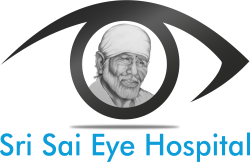- B-10,Housing Board Colony, Kankarbagh - Patna
- Mon - Sat: 9:00 am - 8:00 pm | Sun : 9:00 am - 4:00 pm
Frequently Asked Questions About Eye Health
Overview
The eye is the most complex organ in the entire human body. Our eyes relay visual information from the surrounding and then sends it to the brain via a complex neuronal network.There are six muscles in each eye that help us see in all directions and are responsible for binocular vision. As we age, like all other senses, our eye functions also start to deteriorate and the incidence of refractive errors, glaucoma and cataract increases. To maintain the health of our eyes, we must get our eyes tested at regular intervals.
Some Of The Frequently Asked Questions
If you are healthy and not suffering from any other systemic or ocular comorbidities, you should schedule an eye exam every year. If you wear glasses or contact lenses, you should schedule your eye exam at 6 monthly intervals, especially for children. Yearly checkups are mandatory in people above the age of 40, people with diabetes, hypertension and in patients who have a family history of glaucoma.
Eye examination is very important in young children. If one notices that his or her child is having difficulty in seeing objects like blackboards or television, eye rubbing, watering, or squinting it indicates that the child might have a refractive error. Abnormal watering, discharge or white reflex in eye should also be brought to the notice of your eye doctor.
Lazy eye is also known as amblyopia. It is caused due to uncorrected refractive errors in childhood, squint or congenital cataracts. Inadequate stimulation of the eye leads to incomplete development of the visualsystem. If not diagnosed and treated in time, it can lead to partial or complete visual loss which can even persist in adulthood.
It is an eye disease caused due to increased pressure inside the eyes also known as intraocular pressure. Increased eye pressure damages the optic nerve. This condition is very common in patients above the age of 50, especially if there is a family history of glaucoma. If not treated in time, it may lead to permanent visual loss.
Cataract is an age related opacification of the lens which leads to progressive clouding of vision. It is an age related condition, but can also be seen in the younger age group. It is especially common in diabetics. Cataracts can be successfully treated by a simple surgery, called phacoemulsification, which involves removal of the cloudy lens and replacement with an artificial lens. One can prevent the early development of cataracts by consumption of a good nutritious diet, control of diabetes, protection from harmful UV rays of the sun and cessation of smoking.
This condition is common in adults above the age of 50. It is of two types, dry and wet. Dry ARMD can lead to progressive visual loss but is not vision threatening like wet ARMD which can lead to sudden visual loss, and needs to be treated on an urgent basis. Frequent eye checkups and home monitoring is helpful in preventing such complications.
Dry eye is caused due to multiple factors such as rheumatoid arthritis and Sjogren’s syndrome. However the most common cause in today’s lifestyle is because of increased digital device use and meibomian gland dysfunction( blockage of oil producing glands in our eyelids). Dry eye can be easily treated with lubricant eye drops and warm compresses. Severe cases require punctal plugs and laser treatment(IPL Lumenis).
Mild twitching of eyelids is common, but at the same time, it is can get irritating. It is generally caused due to lack of sleep, anxiety and consumption of caffeine. Rest and discontinuation of smoking and caffeine with ice compresses helps relieving these symptoms.
If your eyes are watery, you can try these remedies. Rinse eyes with clean and cold water, and apply lubricating eye drops. Hot or cold compresses can work depending on the condition. If these remedies do not work, you should consult with your doctor.
“Everyone is different, but most people can drive home from their dilated eye exam. Dilation drops make the pupil larger so I can see into the back of the eye and get a clear view of the retina. With dilation the pupils are larger and more light can come into the eyes, which means patients need sunglasses to drive because it will seem very bright outside. Usually a person's distance vision is still good, but near vision is blurry for several hours after dilation.”
- Always wear sun eyeglasses when going outside, especially on hot summer days.
- Schedule your eye test at a regular intervals.
- Avoid using computers and phones for too long as this will increase the strain on your eyes. Use UV protective glasses to block the harmful rays from digital devices.
- Always eat healthy foods like green leafy vegetables and fruits and avoid eating junk foods.
- Discontinuation of smoking
